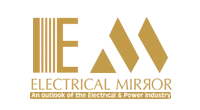Table of Contents
The rapid advancement of technology has revolutionized the electrical sector, and the Internet of Things (IoT) is at the forefront of this transformation. IoT connects electrical devices, sensors, and systems to the internet, enabling real-time monitoring, automation, and data-driven decision-making. This integration is reshaping energy management, industrial operations, and consumer electricity usage. This blog explores the role, benefits, applications, and future prospects of IoT in modern electrical systems.
1. Understanding IoT in Electrical Systems
The Internet of Things (IoT) refers to a network of connected devices that communicate and exchange data over the internet. In electrical systems, IoT devices can monitor energy usage, detect faults, automate processes, and optimize system performance.
Components of IoT in Electrical Systems:
- Sensors: Measure voltage, current, temperature, and other electrical parameters.
- Smart Meters: Record energy consumption in real-time and transmit data to utilities or users.
- Controllers: Automate operations, adjust loads, and manage energy distribution.
- Communication Networks: Enable devices to exchange data securely over the internet.
For more insights on IoT applications and electrical innovations, visit Renewable Time and AndInnovatech.
2. Benefits of IoT in Electrical Systems
a) Real-Time Monitoring
IoT enables continuous monitoring of electrical networks, detecting abnormalities, overloads, or energy inefficiencies instantly.
b) Predictive Maintenance
IoT devices can predict equipment failures before they occur, reducing downtime and maintenance costs.
c) Energy Efficiency
By analyzing consumption patterns, IoT systems optimize energy use, reduce wastage, and lower electricity bills for industries, businesses, and households.
d) Enhanced Safety
IoT sensors detect hazardous conditions such as overvoltage, overheating, or short circuits, triggering automated protective measures.
e) Remote Control and Automation
Electrical devices and systems can be controlled remotely via mobile apps or central management systems, providing flexibility and convenience.
Stay updated on IoT-enabled energy solutions at Renewable Time and AndInnovatech.
3. Applications of IoT in Modern Electrical Systems
a) Smart Grids
IoT facilitates smart grids by monitoring electricity flow, detecting faults, and optimizing energy distribution. Smart grids improve reliability, reduce losses, and integrate renewable energy sources efficiently.
b) Industrial Automation
Factories and industrial plants use IoT to automate electrical equipment, monitor energy usage, and ensure operational safety.
c) Smart Homes
IoT-enabled devices allow homeowners to monitor and control lighting, HVAC systems, and appliances, improving energy efficiency and convenience.
d) Renewable Energy Integration
IoT optimizes solar panels, wind turbines, and energy storage systems, ensuring maximum efficiency and stable energy supply.
e) Predictive Load Management
IoT analyzes demand patterns and adjusts loads accordingly, reducing peak electricity usage and preventing grid overloads.
For more information on IoT applications in electrical systems, visit Renewable Time and AndInnovatech.
4. Challenges in Implementing IoT in Electrical Systems
Despite its advantages, IoT adoption faces several challenges:
- High Initial Costs: Installing sensors, smart meters, and communication networks requires investment.
- Data Security: IoT devices are vulnerable to cyberattacks, necessitating robust cybersecurity measures.
- Interoperability Issues: Devices from different manufacturers may face compatibility challenges.
- Technical Expertise: Skilled personnel are required to manage, analyze, and maintain IoT systems.
- Network Reliability: IoT systems depend on stable internet connectivity for optimal performance.
Addressing these challenges is critical to unlocking the full potential of IoT in electrical systems.
5. Government Initiatives and Smart City Projects
India has launched several initiatives to promote IoT integration in electrical and energy systems:
- Smart Cities Mission: Deploys IoT-based electrical management systems to enhance urban energy efficiency.
- National Smart Grid Mission (NSGM): Focused on modernizing the grid with IoT-enabled monitoring, automation, and control.
- Energy Efficiency Programs: Encourages industries and businesses to adopt IoT-based energy management solutions.
- Renewable Integration Initiatives: Uses IoT for optimal solar and wind energy deployment and storage management.
These initiatives accelerate the adoption of IoT in electrical systems across India.
6. Future Trends of IoT in Electrical Systems
The future of IoT in the electrical sector is promising, driven by advancements in AI, machine learning, and 5G connectivity:
- AI-Powered Predictive Analytics: IoT systems will predict energy consumption patterns and equipment failures with higher accuracy.
- Integration with Renewable Energy: Optimizing hybrid systems with solar, wind, and storage for sustainable energy supply.
- IoT-Enabled EV Charging: Managing electric vehicle charging efficiently and balancing grid demand.
- Smart Industrial Electrical Systems: Fully automated factories with IoT monitoring and energy optimization.
- Edge Computing: Reduces latency in real-time monitoring and control of electrical systems.
IoT is transforming the electrical sector into a smarter, safer, and more efficient ecosystem.
Conclusion
The Internet of Things (IoT) is revolutionizing modern electrical systems by enabling real-time monitoring, automation, predictive maintenance, and energy optimization. From smart grids and industrial automation to smart homes and renewable energy integration, IoT provides solutions for efficiency, safety, and sustainability. As India embraces IoT-enabled electrical systems, it paves the way for a smarter, greener, and more reliable energy future.
For more insights on IoT in electrical systems, energy management solutions, and technological updates, visit Renewable Time and explore innovative solutions at AndInnovatech.


